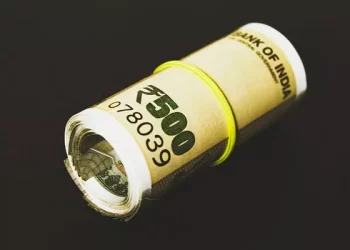Small coin denominations have long played a vital role in any country’s economy, ensuring seamless transactions for low-value goods and providing change in cash-based purchases. In South Africa, the 10 cent coin has historically been one of the most circulated denominations. However, due to inflation, economic shifts, and changing consumer behavior, the use of small coins has gradually declined. This article explores whether you can still use 10 cent coins in South Africa today, and what this means for consumers, retailers, and the broader economy.
1. The Evolution of South African Coinage
Over the decades, South Africa’s currency has gone through several transformations to reflect political changes, economic pressures, and cost efficiency in minting coins. The 10 cent coin was first introduced in 1961 as part of the decimalization of the South African Rand. At the time, it had considerable purchasing power and was widely used across various sectors.
However, over the years, inflation has reduced the buying power of low-denomination coins, including the 1 cent, 2 cent, and 5 cent, all of which were officially withdrawn from circulation in previous years. This naturally raises the question about the 10 cent coin’s relevance and usability in modern-day South Africa.
2. Current Legal Status of the 10 Cent Coin
According to the South African Reserve Bank (SARB), the 10 cent coin is still considered legal tender. This means it can legally be used to settle debts and make purchases, although acceptance may vary in practical terms. While businesses are obligated to accept legal tender, they are also allowed to set reasonable policies on the forms of payment they accept, especially if coins are presented in excessive quantities.
- Issued Material: The 10 cent coin is made primarily of bronze-plated steel.
- Weight and Size: It weighs 2.0 grams and measures 16 mm in diameter.
- Design: The obverse features the national coat of arms, and the reverse includes a protea flower, symbolizing South Africa’s rich biodiversity.
3. Usability in Everyday Transactions
In practice, the usability of the 10 cent coin depends largely on the type of transaction and the preferences of the retailer. For instance, you are more likely to use the coin in:
- Informal Markets: Street vendors and small-scale traders often accept 10 cent coins for low-value items.
- Public Transport: Some minibus taxi drivers and bus services, particularly in rural areas, may still accept small denominations.
- Tuck Shops and Schools: In low-income communities, where small transactions are common, 10 cent coins may still be in circulation.
However, many modern retail chains and service providers are less inclined to handle small coins due to the inconvenience of counting and storage.
4. The Impact of Inflation on Coin Usage
Inflation has had a significant impact on the purchasing power of small denominations. A 10 cent coin today cannot buy what it could 20 years ago. Consequently, many consumers and retailers have shifted away from using small coins, preferring to round prices to the nearest 50 cents or R1.
Effects of Inflation on Coin Circulation:
- Reduced Value: With less buying power, there is little incentive to carry or use the coin.
- Price Rounding: Retailers often round prices up or down, reducing the need for exact change.
- Increased Usage of Electronic Payments: As more South Africans use mobile and card-based payments, the need for coins diminishes further.
5. Digital Payments and Their Influence
South Africa has seen a rapid increase in digital and mobile payments over the last decade. With services like SnapScan, Zapper, and banking apps, consumers have fewer reasons to carry cash, let alone coins. This shift not only enhances convenience but also reduces the circulation and relevance of small denominations like the 10 cent coin.
Key Drivers of Digital Payment Adoption:
- High smartphone penetration
- Growing fintech industry
- Preference for contactless transactions (especially post-COVID-19)
- Safety and efficiency compared to carrying cash
6. Retailer Perspectives on Small Coin Denominations
Retailers generally find small coins cumbersome. Counting, storing, and transporting large volumes of small change involves time and cost. Many retail chains now opt to round prices or give loyalty points instead of issuing small coin change.
Common Retail Practices:
- Rounding off totals: Final amounts are often rounded to the nearest 50 cents.
- Issuing small change in kind: Giving out sweets or small items instead of coins.
- Encouraging card payments: Through incentives and discounts.
Retailers’ reluctance to accept or dispense small coins contributes to their declining usage, even though they remain legal tender.
7. Consumer Behavior and Attitudes
Consumer habits have also shifted. Most people find it inconvenient to carry small coins, often discarding or ignoring them. Surveys indicate that many consumers accumulate coins at home but rarely use them for transactions. This behavior further marginalizes the role of the 10 cent coin in day-to-day commerce.
Key Findings:
- Consumers perceive small coins as negligible in value.
- Many households have jars or containers filled with unused small change.
- Children may use them more frequently in school tuck shops or for bus fares.
8. The Cost of Minting vs. Value
A notable concern for monetary authorities is the cost of minting low-value coins. In many cases, it costs more to produce and distribute a coin than its face value. This imbalance prompts reconsideration of continuing to mint such denominations.
Economic Considerations:
- Minting Cost vs. Face Value: Producing a 10 cent coin may cost more than 10 cents.
- Budget Constraints: The South African Mint must operate within financial and operational limits.
- Environmental Impact: Energy use and materials contribute to the carbon footprint.
9. International Comparisons and Lessons
Globally, many countries have phased out their smallest coin denominations. Canada and Australia, for instance, have removed 1 cent and 2 cent coins and implemented price rounding. These actions have streamlined transactions and reduced minting costs.
Countries That Phased Out Low-Value Coins:
- Canada: Removed the penny in 2013
- Australia: Phased out 1 and 2 cent coins in the 1990s
- New Zealand: No longer mints 5 cent coins
South Africa may take cues from these nations, especially if economic conditions necessitate cost-cutting measures in the production of currency.
Conclusion
For now, consumers can still use 10 cent coins in South Africa, particularly in informal and specific settings. However, they should be aware of the limited acceptance in larger retail environments and the likelihood of continued decline in practical usage. Holding onto excessive small coins may not be beneficial in the long term. Instead, consider depositing them in a bank, donating to charity, or spending them in places where they are still accepted.
In conclusion, while the 10 cent coin remains a legal form of currency in South Africa, its future is uncertain. Economic trends, retail practices, and consumer behavior all point to a diminishing role in the economy. Whether you still use them or not, understanding the current and future value of these coins helps you make informed financial decisions.
Related Topics:

























